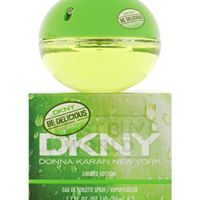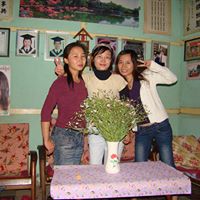Ling Zhang
age ~64
from Houston, TX
- Also known as:
-
- Ling Zhong
- Jia Qing Zhang
- Jiaqing Zhang
- Lin G Zhang
- Ling Z Hang
- Jane Zhang
- Lin G Zhong
- Ling Ghong
- Phone and address:
-
5606 Bissonnet St, Houston, TX 77081
(713)6674508
Ling Zhang Phones & Addresses
- 5606 Bissonnet St, Houston, TX 77081 • (713)6674508
- Bellaire, TX
- Dallas, TX
Isbn (Books And Publications)

Medicine Doctors

Dr. Ling Zhang, Dallas TX - MD (Doctor of Medicine)
view sourceSpecialties:
Physical Medicine & Rehabilitation
Address:
8215 Westchester Dr Suite 221, Dallas, TX 75225
(214)3612772 (Phone), (214)3619968 (Fax)
(214)3612772 (Phone), (214)3619968 (Fax)
Certifications:
Physical Medicine & Rehabilitation
Awards:
Healthgrades Honor Roll
Languages:
English
Hospitals:
8215 Westchester Dr Suite 221, Dallas, TX 75225
Medical Center of Arlington
3301 Matlock Road, Arlington, TX 76015
Medical Center of Arlington
3301 Matlock Road, Arlington, TX 76015
Education:
Medical School
Tongji Med University
Medical School
St Barnabas Med Center
Graduated: 2007
Medical School
University Of Texas Southwestern Med School
Graduated: 2010
Tongji Med University
Medical School
St Barnabas Med Center
Graduated: 2007
Medical School
University Of Texas Southwestern Med School
Graduated: 2010

Ling Zhang
view sourceSpecialties:
Clinical Pathology
Work:
Moffitt Medical GroupMoffitt Cancer Center Pathology
12902 Usf Magnolia Dr, Tampa, FL 33612
(813)7453001 (phone), (813)7458479 (fax)
12902 Usf Magnolia Dr, Tampa, FL 33612
(813)7453001 (phone), (813)7458479 (fax)
Education:
Medical School
Fujian Med Coll, Fuzhou City, Fujian, China
Graduated: 1982
Fujian Med Coll, Fuzhou City, Fujian, China
Graduated: 1982
Languages:
English
Description:
Dr. Zhang graduated from the Fujian Med Coll, Fuzhou City, Fujian, China in 1982. She works in Tampa, FL and specializes in Clinical Pathology.

Ling Zhang
view sourceSpecialties:
Physical Medicine & Rehabilitation
Work:
Health South Rehabilitation Hospital
7930 Northaven Rd, Dallas, TX 75230
(214)7068200 (phone), (214)7068380 (fax)
Star Health & Rehab PA
6715 Pemberton Dr, Dallas, TX 75230
(214)8087704 (phone), (214)9871475 (fax)
7930 Northaven Rd, Dallas, TX 75230
(214)7068200 (phone), (214)7068380 (fax)
Star Health & Rehab PA
6715 Pemberton Dr, Dallas, TX 75230
(214)8087704 (phone), (214)9871475 (fax)
Education:
Medical School
Tongji Med Univ, Wuhan City, Hubei, China
Graduated: 1982
Tongji Med Univ, Wuhan City, Hubei, China
Graduated: 1982
Languages:
English
Description:
Dr. Zhang graduated from the Tongji Med Univ, Wuhan City, Hubei, China in 1982. She works in Dallas, TX and 1 other location and specializes in Physical Medicine & Rehabilitation.

Ling Zhang
view sourceSpecialties:
Pathology
Anatomic Pathology
Hematology
Anatomic Pathology
Hematology

Ling Zhang
view sourceSpecialties:
Physical Medicine & Rehabilitation
Hematology
Anatomic Pathology & Clinical Pathology
Clinical Pathology/Laboratory Medicine
Hematology
Anatomic Pathology & Clinical Pathology
Clinical Pathology/Laboratory Medicine
Education:
China Medical University (1982)

Ling Zhang
view sourceSpecialties:
Anesthesiology
Education:
Xian Medical University, Xian, Shaanxi (1982)
Us Patents
-
Methods For Producing Crosslinkable Silyl Group-Containing Polyoxyalkylene Polymers
view source -
US Patent:20130060000, Mar 7, 2013
-
Filed:May 26, 2011
-
Appl. No.:13/696918
-
Inventors:Ling Zhang - Missouri City TX, US
Daniel A. Aguilar - Lake Jackson TX, US
Debkumar Bhattacharjee - Blue Bell PA, US
William A. Koonce - Pearland TX, US
Basudeb Saha - Missouri City TX, US -
Assignee:DOW GLOBAL TECHNOLOGIES LLC - Midland MI
-
International Classification:C07F 7/02
C08G 18/73
C08G 18/71 -
US Classification:528 67, 528 75, 556444
-
Abstract:Embodiments of the invention provide for a method of producing a silylated polyoxyalkylene polymer having at least one crosslinkable silyl group and at least one hydroxyl group in each molecule. The method comprises providing a polyoxyalkylene polymer having at least one unsaturated group and at least one alcoholic hydroxyl group in each molecule, wherein the polyoxyalkylene polymer includes an impurity double metal cyanide complex mixed therein, and wherein the polyoxyalkylene polymer has not been treated with a metal-coordinating compound; and adding to the polyoxyalkylene polymer a compound having a hydrogen-silicon bond and a crosslinkable silyl group in each molecule and a hydrosilylation catalyst to thereby carry out a hydrosilylation reaction, wherein the hydrosilyation reaction is performed in an absence of a metal-coordinating compound.
-
Low Viscosity Silyl-Terminated Polymers
view source -
US Patent:20130090429, Apr 11, 2013
-
Filed:Jun 29, 2011
-
Appl. No.:13/805952
-
Inventors:Ling Zhang - Missouri City TX, US
Kamesh R. Vyakaranam - Pearland TX, US
Sara Arshad - West Springfield MA, US
William A. Koonce - Pearland TX, US -
Assignee:DOW GLOBAL TECHNOLOGIES LLC - Midland MI
-
International Classification:C08G 18/38
-
US Classification:524590, 525460
-
Abstract:Embodiment of the invention provide for compositions having at least one crosslinkable silyl group in each molecule. The crosslinkable silane-terminated polymer may include a reaction product of at least a polyol having a nominal functionality of at least 2 and a isocyanate capped hydrosilylated polymer. The isocyanate capped hydrosilylated polymer may include a reaction product of at least one isocyanate and a hydrosilylated polymer. The hydrosilylated polymer may include a reaction product of a the reaction of at least a) a polymer having at least one unsaturated group and at least one alcoholic hydroxyl group in each molecule and having a number average molecular weight of between about 100 and about 5000 and b) a compound having a hydrogen-silicon bond and a crosslinkable silyl group in each molecule.
-
Tin Free Silyl-Terminated Polymers
view source -
US Patent:20130096252, Apr 18, 2013
-
Filed:Jun 29, 2011
-
Appl. No.:13/704162
-
Inventors:Kamesh R. Vyakaranam - Pearland TX, US
Ling Zhang - Missouri City TX, US
William A. Koonce - Pearland TX, US
Juan Carlos Medina - Lake Jackson TX, US
Ganesh Kailasam - Pearland TX, US
Rajat Duggal - Pearland TX, US
Nathan Wilmot - Missouri City TX, US -
Assignee:DOW GLOBAL TECHNOLOGIES LLC - Midland MI
-
International Classification:C08G 18/22
C08G 18/38 -
US Classification:524588, 528 28, 528 15, 528 21, 528 23, 528 13
-
Abstract:Embodiments of the invention provide for methods of producing a composition comprising a crosslinkable silane-terminated polymer having at least one crosslinkable silyl group in each molecule. The method comprises providing a polymer having at least one unsaturated group and at least one alcoholic hydroxyl group in each molecule, adding to the polymer a compound having a hydrogen-silicon bond and a crosslinkable silyl group in each molecule and a hydrosilylation catalyst to thereby carry out a hydrosilylation reaction to form a composition comprising hydrosilylated polyoxyalkylene polymers, reacting the hydrosilylated polyoxyalkylene polymers with at least one isocyanate in the presence of a first tin-free catalyst to form an isocyanate reacted hydrosilylated polymer, and optionally reacting the isocyanate reacted hydrosilylated polymer with a polyol having a nominal functionality of at least 2 to form a polyol reacted crosslinkable silane-terminated polymer.
-
Silyl-Terminated Polymers
view source -
US Patent:20130096274, Apr 18, 2013
-
Filed:Jun 28, 2011
-
Appl. No.:13/806962
-
Inventors:Kameswara R. Vyakaranam - Pearland TX, US
Ling Zhang - Missouri City TX, US
William A. Koonce - Pearland TX, US
Sara Arshad - West Springfield MA, US
Venkat S. Minnikanti - Pearland TX, US
Dwight D. Latham - Clute TX, US
Phillip S. Athey - Lake Jackson TX, US -
Assignee:DOW GLOBAL TECHNOLOGIES LLC - Midland MI
-
International Classification:C08G 18/70
-
US Classification:528 29
-
Abstract:Embodiments of the invention provide for compositions including a crosslinkable silane-terminated polymer having at least one crosslinkable silyl group in each molecule. The crosslinkable silane-terminated polymer comprises a reaction product of at least a isocyanate capped hydrosilylated polymer and a polyol having a nominal functionality of at least 2 which is at least one of a polycarbonate polyol, a natural oil based polyol, a polyoxyalkyleneamine, a difunctional aromatic amine, a polybutyloxide polyether polyol, and a polytetramethylene glycol.
-
Human Application Of Engineered Chimeric Antigen Receptor (Car) T-Cells
view source -
US Patent:20200085929, Mar 19, 2020
-
Filed:Aug 19, 2019
-
Appl. No.:16/543980
-
Inventors:- Austin TX, US
Hiroki TORIKAI - Houston TX, US
Ling ZHANG - Houston TX, US
Helen HULS - Houston TX, US
Lenka HURTON - Houston TX, US
Simon OLIVARES - Houston TX, US
Janani KRISHNAMURTHY - Houston TX, US -
International Classification:A61K 39/00
A61P 37/00
C07K 14/725
A61K 35/17
C07K 14/54
C07K 14/705
C07K 16/30 -
Abstract:The present invention concerns methods and compositions for immunotherapy employing a modified T cell comprising a chimeric antigen receptor (CAR). In particular aspects, CAR-expressing T-cells are producing using electroporation in conjunction with a transposon-based integration system to produce a population of CAR-expressing cells that require minimal ex vivo expansion or that can be directly administered to patients for disease (e.g., cancer) treatment.
-
Human Application Of Engineered Chimeric Antigen Receptor (Car) T-Cells
view source -
US Patent:20170224798, Aug 10, 2017
-
Filed:Feb 16, 2017
-
Appl. No.:15/434595
-
Inventors:- Austin TX, US
Hiroki TORIKAI - Houston TX, US
Ling ZHANG - Houston TX, US
Helen HULS - Houston TX, US
Lenka HURTON - Houston TX, US
Simon OLIVARES - Houston TX, US
Janani KRISHNAMURTHY - Houston TX, US -
International Classification:A61K 39/00
C07K 14/705
C07K 14/725
C07K 16/30 -
Abstract:The present invention concerns methods and compositions for immunotherapy employing a modified T cell comprising a chimeric antigen receptor (CAR). In particular aspects, CAR-expressing T-cells are producing using electroporation in conjunction with a transposon-based integration system to produce a population of CAR-expressing cells that require minimal ex vivo expansion or that can be directly administered to patients for disease (e.g., cancer) treatment.
-
Human Application Of Engineered Chimeric Antigen Receptor (Car) T-Cells
view source -
US Patent:20160158285, Jun 9, 2016
-
Filed:May 14, 2014
-
Appl. No.:14/890977
-
Inventors:- Austin TX, US
Hiroki TORIKAI - Houston TX, US
Ling ZHANG - Houston TX, US
Helen HULS - Houston TX, US
Lenka HURTON - Houston TX, US
Simon OLIVARES - Houston TX, US
Janani KRISHNAMURTHY - Houston TX, US -
International Classification:A61K 35/17
C07K 14/54 -
Abstract:The present invention concerns methods and compositions for immunotherapy employing a modified T cell comprising a chimeric antigen receptor (CAR). In particular aspects, CAR-expressing T-cells are producing using electroporation in conjunction with a transposon-based integration system to produce a population of CAR-expressing cells that require minimal ex vivo expansion or that can be directly administered to patients for disease (e.g., cancer) treatment.
-
Tin Free Silyl-Terminated Polymers
view source -
US Patent:20150011722, Jan 8, 2015
-
Filed:Sep 25, 2014
-
Appl. No.:14/496269
-
Inventors:- Midland MI, US
Ling Zhang - Missouri City TX, US
William A. Koonce - Pearland TX, US
Juan Carlos Medina - Lake Jackson TX, US
Ganesh Kailasam - Pearland TX, US
Rajat Duggal - Pearland TX, US
Nathan Wilmot - Missouri City TX, US -
International Classification:C08G 18/50
C08G 18/20
C08G 18/22
C08G 18/76 -
US Classification:528 19, 528 28, 528 21
-
Abstract:Embodiments of the invention provide for methods of producing a composition comprising a crosslinkable silane-terminated polymer having at least one crosslinkable silyl group in each molecule. The method comprises providing a polymer having at least one unsaturated group and at least one alcoholic hydroxyl group in each molecule, adding to the polymer a compound having a hydrogen-silicon bond and a crosslinkable silyl group in each molecule and a hydrosilylation catalyst to thereby carry out a hydrosilylation reaction to form a composition comprising hydrosilylated polyoxyalkylene polymers, reacting the hydrosilylated polyoxyalkylene polymers with at least one isocyanate in the presence of a first tin-free catalyst to form an isocyanate reacted hydrosilylated polymer, and optionally reacting the isocyanate reacted hydrosilylated polymer with a polyol having a nominal functionality of at least 2 to form a polyol reacted crosslinkable silane-terminated polymer.
Lawyers & Attorneys

Ling Jia Zhang - Lawyer
view sourceLicenses:
New York - Delinquent 2007
Education:
St. Louis University School of Law
Specialties:
Advertising - 34%
Corporate / Incorporation - 33%
Communications / Media - 33%
Corporate / Incorporation - 33%
Communications / Media - 33%

Ling Zhang - Lawyer
view sourceSpecialties:
Advertising
Corporate / Incorporation
Communications / Media
Communications / Media
Advertising
Corporate / Incorporation
Communications / Media
Communications / Media
Advertising
ISLN:
924295712
Admitted:
2007
Name / Title
Company / Classification
Phones & Addresses
President
JENNY WANG, INC
6100 Corporate Dr STE 588, Houston, TX 77036
107 Cummins Ave, Cleveland, TX 77327
107 Cummins Ave, Cleveland, TX 77327
President, Director
NORTH AMERICA VALVE TECHNOLOGY CO
4807 Commercial Park Dr, Austin, TX 78724
3102 Produce Row, Houston, TX 77023
2305 Rodoo Dr, Austin, TX 78727
3102 Produce Row, Houston, TX 77023
2305 Rodoo Dr, Austin, TX 78727
Director
FIRST CHINESE CHRISTIAN CHURCH (DOC) OF TEXAS
111 W Spg Vly Rd STE 250, Richardson, TX 75081
1431 Fieldstone Dr, Allen, TX 75002
1431 Fieldstone Dr, Allen, TX 75002
Director, Managing
PROSPERITY COMMERCIAL, LLC
4545 Firewheel Dr, Plano, TX 75024
6715 Pemberton Dr, Dallas, TX 75230
6715 Pemberton Dr, Dallas, TX 75230
Director, Managing
TAOZ MANAGEMENT, LLC
4545 Firewheel Dr, Plano, TX 75024
6715 Pemberton Dr, Dallas, TX 75230
6715 Pemberton Dr, Dallas, TX 75230
Medical Doctor, Owner, Physical Medicine, President, Principal
Star Health & Rehab, PA
Health/Allied Services
Health/Allied Services
1410 E Sandy Lk Rd, Coppell, TX 75019
MR PANDA USA, LTD
Ling Zhang MD
Physical Medicine
Physical Medicine
6715 Pemberton Dr, Dallas, TX 75230
(214)8087704, (972)9060154
(214)8087704, (972)9060154
Myspace
Googleplus

Ling Zhang
Work:
Beijing
Education:
Malardalen

Ling Zhang
Work:
Bertelsmann - UI
Education:
Hubei academy of fine art - Design
Tagline:
你+,我+,他+google+

Ling Zhang
Education:
The One Academy - Design

Ling Zhang
Work:
Enbridge

Ling Zhang

Ling Zhang
About:
寧波に外国向けの文具...

Ling Zhang

Ling Zhang
Flickr
Plaxo

zhang Ling
view source
Zhang Ling
view source中国
Classmates

cal- state university los...
view sourceGraduates:
Raj Chaugule (1991-1995),
Elizabeth MacLean (1971-1975),
Nadia Mehdi (1992-1996),
Monir Hosseiniyar (1982-1986),
Yan Ling Zhang (2000-2004)
Elizabeth MacLean (1971-1975),
Nadia Mehdi (1992-1996),
Monir Hosseiniyar (1982-1986),
Yan Ling Zhang (2000-2004)
Youtube

Ling Ling Zhang
view source
Ling Zhang
view source
Xiao Ling Zhang
view source
Michelle Xin Ling Zhang
view source
Ling Hang Zhang
view source
Ling Ling Zhang
view source
Ling Ling Zhang
view source
Chia Ling Zhang
view sourceNews

Fat Beneath Skin May Ward Off Infections
view source- Ling Zhang, the first author of the paper, exposed mice to S. aureus and within hours detected a major increase in both the number and size of fat cells at the site of infection. More importantly, these fat cells produced high levels of an antimicrobial peptide (AMP) called cathelicidin antimicrobia
- Date: Jan 02, 2015
- Category: Health
- Source: Google

Fat can help keep your skin 'infection free'
view source- aureus in the fat layer of the skin, so researchers looked to see if the subcutaneous fat played a role in preventing skin infections.Ling Zhang, PhD, the first author of the paper, exposed mice to S. aureus and within hours detected a major increase in both the number and size of fat cells at the
- Date: Jan 02, 2015
- Category: Health
- Source: Google
Get Report for Ling Zhang from Houston, TX, age ~64















